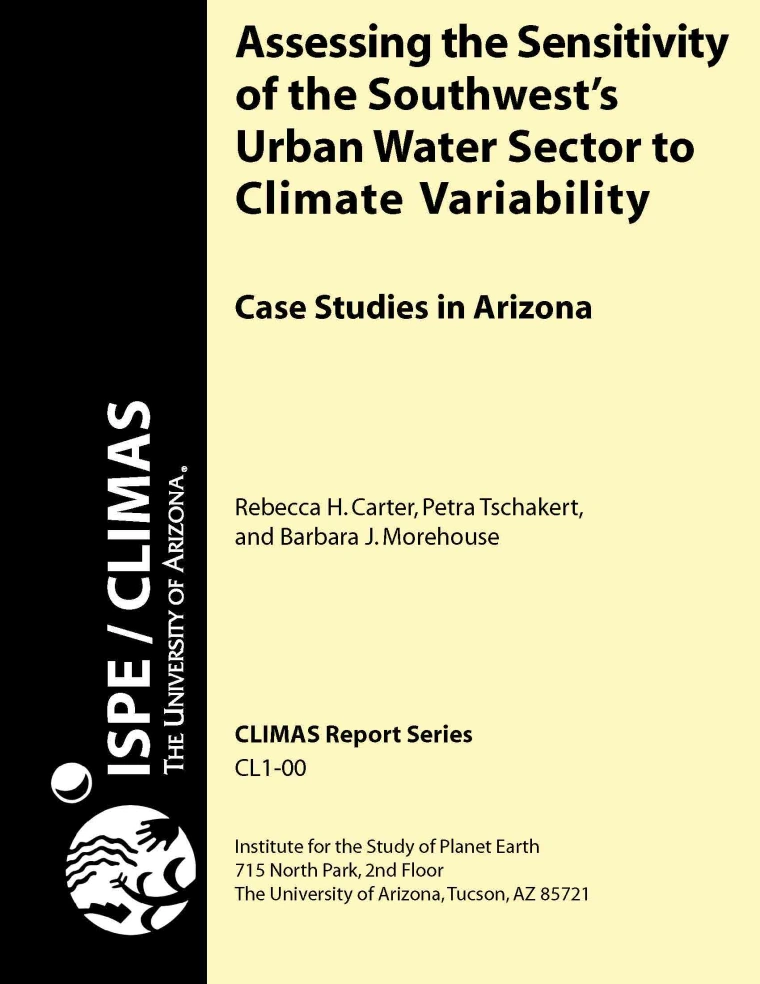Reference
Carter, R., Tschakert, P., & Morehouse, B. J. (2000). Assessing the Sensitivity of the Southwest’s Urban Water Sector to Climatic Variability (Issue CL1-00). Climate Assessment for the Southwest, University of Arizona.
Publication File
Document


